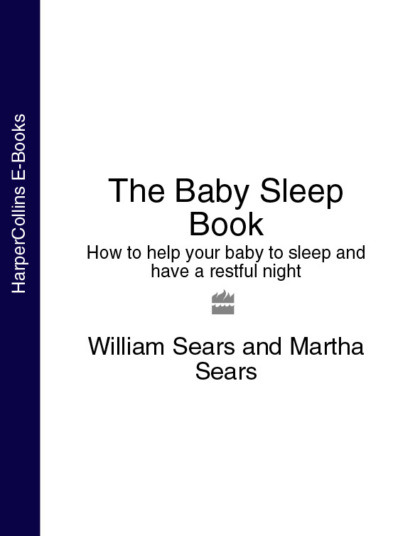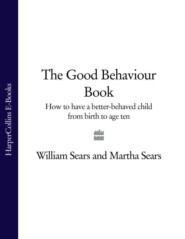По всем вопросам обращайтесь на: info@litportal.ru
(©) 2003-2024.
✖
The Baby Sleep Book: How to help your baby to sleep and have a restful night
Автор
Год написания книги
2018
Настройки чтения
Размер шрифта
Высота строк
Поля
Rhythmic music. Music with simple repeating words and rhythms is soothing to babies. Nursery rhymes and lullabies are the classic examples. Even quiet pop music with a steady beat can get baby into the rhythm of sleep. Peaceful classical music is another favourite. Complex classical music, on the other hand, can be over stimulating.
More sounds to sleep by. Use white noise – monotonous sounds that block out other noises and bore a baby to sleep. Besides the continuous monotone humming or “Shhhh” of a parent, here are some white-noise sounds that work:
Sound of a fan, air conditioner, or even tape recordings of womb sounds or vacuum cleaner sounds. (Don’t wear out your vacuum – record the sound.)
Running water from a nearby tap or shower. (Record it to conserve water.)
A bubbling fish tank.
A loudly ticking clock or a metronome set at sixty beats a minute. (These can be tape-recorded too.)
Recordings of waterfalls or ocean sounds.
Rocking in a rocker to the hum of a small fan.
I wore my baby in a sling while vacuuming. The sounds lulled him to sleep and I got some cleaning done.
Our son loves to feed to sleep and sometimes will prolong the feed as much as 30–40 minutes. My partner realized one evening that our son had fallen asleep after only ten minutes while feeding and listening to a quiet Mummy and Daddy conversation. I decided to tape our conversation one evening. Now when our son needs to go to sleep a little faster and my partner isn’t around to talk to, I just play our Mummy and Daddy tape.
If baby is restless and won’t feed off to sleep, my partner turns on the dishwasher for white noise and then walks baby for a while.
Motion for sleep. What baby doesn’t like motion? This is why babies fall asleep in swings, rockers, cars, and while being held and walked. Here are suggestions for slings, swings, and other things you can use to lull baby to sleep:
Rocking. Mum or Dad’s arms and the steady motion of a rocking chair have been putting babies to sleep for ages.
Cradle. Gently rock baby’s cradle to lull baby to sleep or back to sleep.
Baby swing. Many babies will drift off to sleep in a baby swing at nap time or bedtime.
Baby slings. “Wearing baby” in a sling or other infant carrier while you move about simulates the womb environment and will soothe baby to sleep. (See wearing down (#litres_trial_promo)).
Dancing for all the senses. You can combine all kinds of sensory input in a dance that will envelop baby in a soothing environment. This works well for fussy babies or those that fight sleep. Snuggle baby in your arms, either in the cradle hold, up on your shoulder, or draped tummy down over your forearm. Move around gently in all directions – up, down, and back and forth, and pat baby’s bottom as you hum, sing, or make other gentle sounds. All this gentle stimulation blocks out the anxious, fretful feelings coming from inside of baby and really takes baby back to the womb.
science says: crying it out could be harmful to babies
Is it possible that excessive crying can harm a baby’s intellectual, emotional, and social development? Here is how science answers this alarming question:
Infants who are routinely separated from parents in a stressful way have abnormally high levels of the stress hormone cortisol and lower growth hormone levels. These imbalances inhibit the growth of nerve tissue in the brain.1 (#litres_trial_promo), 2 (#litres_trial_promo), 3 (#litres_trial_promo), 4 (#litres_trial_promo)
Researchers at Yale University and Harvard Medical School found that intense stress early in life can alter the brain’s neurotransmitters and structure in a similar way to that found in adults with depression.5 (#litres_trial_promo), 6 (#litres_trial_promo)
A study from the University of Hertfordshire, U.K., showed infants with persistent crying episodes were 10 times more likely to grow up to have ADHD, concluding this may be due to unresponsive parenting.7 (#litres_trial_promo)
Research at Baylor University found when chronic stress over-stimulates an infant’s brain, the child will grow up with an overactive adrenaline system, causing aggression, impulsivity, and violence later in life.8 (#litres_trial_promo)
Studies at the UCLA School of Medicine found the stress hormone cortisol actually destroys nerve connections in critical portions of an infant’s developing brain, and when babies are neglected, they can grow up to be violent, impulsive, and emotionally unattached children.9 (#litres_trial_promo), 10 (#litres_trial_promo)
Doctors at Case Western and Duke Universities showed prolonged crying in infants caused increased pressure in the brain, elevated stress hormones and decreased oxygenation to the brain.11 (#litres_trial_promo), 12 (#litres_trial_promo)
Researchers found babies whose cries are usually ignored will not develop healthy intellectual and social skills.13 (#litres_trial_promo)
Doctors at the National Institute of Health found that infants with prolonged crying (not due to colic) in the first 3 months of life had an average IQ 9 points lower at five years of age and had poor fine motor development.14 (#litres_trial_promo)
Infants with excessive crying during the early months show difficulty controlling their emotions and become even fussier when parents try to console them at 10 months.15 (#litres_trial_promo)
All babies cry, and most babies grow up to be emotionally and neurologically healthy children. However, this research is clear on one point: intense, extended periods of crying alone can permanently harm a baby’s developing brain. What does this mean for the CIO method? A baby who only cries briefly for a few nights is probably fine. What about crying for many minutes, night after night? We can’t say how many minutes and how many nights are safe, because no one has ever researched this. We urge parents to be very cautious if they decide to try this method.
A box full of tricks. While most babies need a predictable routine to get to sleep, some enjoy novelty. And even your best transitioning tips may not work when baby enters a new stage of development. You need a box full of sleep strategies to see you through the first year or two of your baby’s life. Keep trying new things.
Your attitude. Consider winding-down routines as an opportunity to spend quality time with your child. Enjoy this peaceful time together. Don’t look at your watch. Don’t think about everything else you have to do. Your baby will pick up on your relaxed attitude and probably go to sleep more easily.
Trial Period
During this first week or two you will be trying to work out what primary sleep associations work for your baby.
For newborns and younger babies, you will be trying to find one (or maybe two) things that you can depend on to get your baby off to sleep. This may turn out to be feeding, rocking or walking.
For older infants and those who already have a strong primary sleep association (in other words, something you can count on to nearly always turn on the sleep switch), you will be trying to find one or two new primary sleep associations either because the old ones are no longer working for you or because you want your baby to be able to fall asleep in other ways. Your baby will probably protest or fight this change and want you to go back to the tried-and-true. Keep trying different ideas, as long as you are comfortable. Use secondary sleep associations, such as music or motion, along with whatever primary sleep association you are trying to establish. Write down your observations, to help you remember what works.
What is your baby’s favourite sleep-association combo? _______________________________
Now that you have figured out a variety of ways to happily parent your baby to sleep, let’s learn ways of helping baby to enjoy sleeping longer.
step 5: help baby stay asleep longer (#ulink_1e23c580-aeda-582b-8352-33fdff38efd4)
Babies – and parents – enjoy a more restful night if their sleep is not cut short. As you will learn in chapter 3 (#u40d788b3-9557-5179-9904-2c617c25b004), babies are wired to wake up during the night, and they usually need a parent’s help to settle back into sleep. As babies mature, so do their sleep patterns, so that they are able to sleep longer stretches and resettle themselves. When this blissful time happens varies greatly from baby to baby. While you can’t force your baby to sleep through the night, you can provide conditions that will help your child attain sleep maturity to sleep longer stretches.
Why do babies wake up so much? Answer: they’re babies! In chapter 3 (#u40d788b3-9557-5179-9904-2c617c25b004) and chapter 11 (#litres_trial_promo) we’ll discuss the many developmental, medical, and physical reasons babies wake up. Keeping in mind that breastfeeding babies under one year typically need to feed twice a night, and over a year sometimes at least once, here are some ideas for teaching babies how to go back to sleep.
Change where baby sleeps. In step one you chose where you want baby to sleep. Hopefully it is working for both of you. However, the bed that baby starts the night in may not necessarily be the same bed she wakes up in each morning. Consider this: is your baby waking during the night because she is alone in another room and wants to be closer to you? If you think this may be the case, try moving baby closer to you (see “Sleeping in your room, but not in your bed” (#ulink_d2dd2488-2050-5246-92a1-e2505d112367), or “Sleeping with baby in your bed” (#ulink_86be590a-7d75-5f55-ba96-3adeab6b9218)) at the first night waking. Or is baby already in your bed, and waking up because you are right there? If so, try moving baby further away from you when you come to bed or at the first night waking.
“Coach” baby to sleep. Repeating cue words, sounds that baby associates with going to sleep, will often help baby get back to sleep. Offer these cues as the last sound baby hears before drifting off to sleep and use these same words again when she awakens in the middle of the night: “night-night”, “sleepy-sleepy”, “happy nappy”, or “Shhhh”. Using the sleep associations principle, baby learns to associate these sounds with both going to sleep and going back to sleep. The time-tested sound “shhhh”, which mothers naturally do, has a biological basis. It is similar to the sound of uterine blood flow that baby was used to while in the womb.
When he made his first peep, we quickly issued reminders, such as: “Shhhh … sleepy-sleepy.” We let him know that it wasn’t time to get up yet.
Lay on hands. When baby stirs, gently lay hands on her without picking her up. Stay with her and continue laying on a comforting hand as you say or sing your favourite sleep cues, such as “night-night”, “sleepy-sleepy” … Stay by her bedside until she falls asleep. If she starts to wake up right away or awakens during the night, again lay on hands and give her your “sleepy-sleepy” sleep cue. Hopefully this will be enough to soothe her back to sleep. If she just can’t fall asleep, pick her up and walk around the bedroom a while holding her in a sleep-inducing position, such as the neck nestle (see this technique, page (#litres_trial_promo)), or sit in a rocking chair or recliner and try to get her back to sleep.
Leave a little bit of mother behind. To help a baby stay asleep when you are not there, have something nearby that smells like you. This might be a breast pad, which has the odour of your milk, or an item of your clothing. Your bed will naturally have your scent. You can also sleep with baby’s cot or cradle sheets for a night (use them for a pillow case), and then place them on baby’s mattress. Your scent should last for a few days.
I feed and wear my baby a lot during the day. He actually sleeps better if I take off the shirt that I have worn all day and cover him with it before I put the blanket on him at night.
Offer a thumb or a dummy. Pacifier, the American name for dummy, literally means “peacemaker”. Giving baby something to suck on will often bring peace to both baby and parents. You can actually help your baby learn to suck his thumb. Thumbs are handier than dummies. They are warm, soft, and easily available. They don’t fall on the floor; they are just the right size for baby’s mouth. They don’t obstruct the nose or need to be clipped on with a cord. Babies feel more in control of a thumb.
As you’re putting baby down to sleep, ease her thumb into her mouth, and do this again each time she wakes up. This way she learns to associate sucking her thumb with going to sleep – and back to sleep. If baby continues to suck but wakes up anyway, she’s probably hungry and needs you, and not just a milk-less thumb. During a check-up when I need tiny babies to be quiet so that I can listen to their hearts, I sometimes insert their thumb in their mouth. Sometimes I notice mothers raise their eyebrows as if they didn’t realize they could do this. Babies in the womb suck their thumbs. In the early months, babies who can’t quite find their thumbs will suck on their wrists, or even forearms. They are born with their own natural pacifier. Take advantage of it. And don’t overuse artificial pacifiers. If when baby cries you find yourself by reflex reaching for the dummy instead of baby, remember our advice: “use it, don’t abuse it, and quickly try to lose it”.
Some parents worry that purposely teaching baby to suck his thumb will lead to a long-term habit which will be hard to break (you can’t just throw the thumb away like you can the dummy). While this can happen, if it gets you a better night’s sleep for now it’s probably worth it.
Try both the quick and the delayed response. Should you come running as soon as you hear your baby awaken in the night? Or should you hold off and see if baby goes back to sleep? Again, it’s your decision. Some parents find it easier if they quickly get to baby and help baby back to sleep before the cries escalate and baby gets revved up. If you wait too long, it can be much harder for both mother and baby to get back to sleep. With co-sleeping babies, a half-awake mother can simply roll over and feed her half-awake baby, and the pair drift back to sleep without either one getting worked up. Other parents find that if they just let their baby squirm and fuss a bit, baby is able to resettle without intervention. This is a waking-by-waking decision. It helps to remember that not all noises that sleeping babies make are cries for help. (See “Normal Night Noises Sleeping Babies Make” (#litres_trial_promo)). If you think your baby can settle himself back to sleep, delay rushing in and picking him up. Give him a chance to work things out on his own. He will let you know if he needs help.







